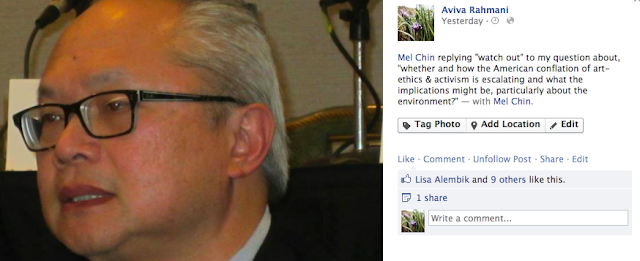Participatory mapping is a key tool for many ecological artists working with communities. It will also be a phase of the work planned for Fish Story. It will be part of our event at Crosstown Arts May 8 and contribute both to the subsequent installation at the the Memphis College of Art and the webcast event there May 11. Here, I've excerpted an edited rough draft version of the introduction to the fourth chapter of my dissertation, which discusses how participatory mapping can function in communities to bring attention to critical problems which might otherwise be overlooked:
“Geography, sir, is
ruinous in its effects on the lower classes. Reading, writing, and arithmetic
are comparatively safe, but geography invariably leads to revolution.” (1879
testimony before a Select Committee of the House of Commons, London, England,
regarding expenditures of the London School Board and the introduction to Juliana Maantay's blog on GIS mapping http://geographer-at-large.blogspot.com/2011/12/map-of-week-12-05-2011new-dencity.html)
“Where maps measure and
notate the world, mapping is, in the words of landscape architect James Corner,
‘a collective enabling enterprise,’ a creative act that describes and
constructs the space we live in, a project that ‘reveals and realizes hidden
potential.’” (Abams, Hall 2006)
Arguably, mapping is the
perfect visualization of metaphorical relationships. Increasingly, what is
mapped is far more complex than simple indications of where material, abiotic
elements might be located. Mapping is used to diagram conversations, ideas and
consumer habits. It is therefore not surprising that many artists, especially
those concerned with conceptual or ecosystem functions have explored mapping as
either a genre or a tool, as have I.
In this chapter, I will
discuss how mapping is used as a tool for environmental activism and
conservation. I will make comparisons between how GIS is used by environmental
artists. I will consider what GISc
means in the particular context of identifying nucleation points for landscape
scale restoration as environmental triage and discuss why and how I employed
GISc as a tool to argue for trigger point theory.
Participatory mapping as a means to empower the invisible
In
other cultures, as Australian aboriginal Maori peoples, maps of dreams and
spiritual experiences in walkabouts have always been considered as real, if not
more so, as the material world. Such maps may be seen as precursors to
participatory mapping, a ubiquitously applied Western educative exercise in
“locating” experiences of a place that may include diverse elements which might
be given relatively equal spatial value, e.g., subjective perception and
memory, emotions of fear or serenity, government regulations, a bicycle route
or a river. Participatory mapping is often used to formally engage communities,
as pastoral Kenyan farmers in public planning for ranked risk management (Smith
et al 2000). This may be a critical methodology for land and water management. In the Kenyan example microvariant
concerns about education and health were brought to the attention of government
policy makers. It can make a relatively inexpensive bridge between intuitive
and precise observations and engage hitherto unlikely sources for critical
analysis, as sexworkers in Madagascar (Kruse et al 2003) to track where
sexually transmitted diseases might be communicated.
In
these examples, events and experiences are not always expected to be locationally
accurate as psychosocial reality which can be a disadvantage of the technique.
A church may be disproportionately large in relation to a forest stand. It can
be difficult to later georeference important data. As with adaptive management,
less vocal participants can become excluded. At worst, these documents can be a
treasure map for scarce or protected resources.
The International Fund for Agricultural Development (IFAD) recommends that communities
undertaking participatory mapping with outside stakeholders protect themselves
with written legal agreements. IFAD recommends that goals be clearly identified
by asking questions such as:
• Why do we want to make a map?
• Who do we want to show it to?
• What are some of our most important
land-related issues?
• What can we use the map for in the
short term?
• What can we use the map for in the long
term?
• Is there a predefined reason for
creating the map?
The
advantages of participatory mapping, besides economics and time sensitivity
include that respondents who actively participate can determine priorities,
create easily understood, informal visuals and indicate early warnings of
problems without laborious training. Indigenous communities often initiate
participatory mapping as a means of empowerment. It can be a first political advocacy
step in archiving or sharing local knowledge and making concerns visible to an
outside world, including sovereignty claims (IFAD 2009) and resistance to
industrial hegemony. These maps may be 3D, include oral or written histories
and songs as well as graphics, creating accessible performative scripts for map
readers. Policy and restoration work is often best served by a combination of
participatory mapping and GIS spatialization. In poorer communities the need to
integrate participatory mapping with low cost GIS can be served by a movement
for participatory GIS (PGIS). But that doesn’t mitigate how difficult GIS
software can be.






